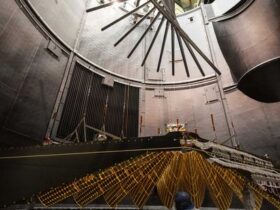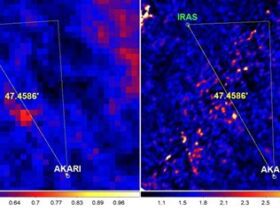Black holes are like the universe’s unsolved riddles, often wrapped in paradoxes and coated in enigma. And thanks to the James Webb Space Telescope (JWST), this cosmic mystery has just gotten even juicier. Recent observations have uncovered colossal black holes lurking in the universe’s infancy—a discovery so baffling it has astronomers scratching their heads and scrambling for explanations. But don’t worry, science might have a new trick up its sleeve: primordial “seeds.”
Black Holes That Shouldn’t Exist (But Do)
Picture this: mere hundreds of millions of years after the Big Bang, the universe was a newborn—a playground of chaos where stars and galaxies were just starting to light up. Yet, JWST has spotted black holes with masses rivaling billions of suns. How, you ask, could such behemoths exist when there simply wasn’t enough time for stars to live, die, and grow these monsters? It’s the ultimate cosmic puzzle.
Traditionally, black holes form when massive stars collapse under their own gravity. From there, they gorge on surrounding material or merge with other black holes to bulk up. But this process takes time—lots of it. And we’re talking about black holes that formed faster than a toddler can upend a box of toys. This timeline mismatch led scientists to rethink everything we thought we knew.
A Wild Idea from the 1970s
Enter Stephen Hawking, the man who never shied away from thinking outside the box (or black hole). Back in the 1970s, he proposed the idea of primordial black holes—tiny but powerful black holes born not from dying stars but directly from the energy-dense, chaotic conditions of the Big Bang itself.
These weren’t your typical black holes; they could be as small as an asteroid and yet pack a gravitational punch. Over time, Hawking theorized, many of these would evaporate due to “Hawking radiation.” Decades of astronomical surveys, however, found no smoking gun to confirm their existence, so the idea quietly took a backseat. Until now.
Could Primordial Black Holes Be the Culprits?
A recent study has dusted off Hawking’s idea and added a twist. What if even a fraction of primordial black holes survived the chaotic early universe? In regions rich in matter, these tiny seeds could have quickly gobbled up their surroundings, growing into the supermassive black holes we see today.
Think of it as the ultimate cosmic fast food binge—except instead of burgers, these black holes were devouring stars, gas, and anything else unlucky enough to be nearby. In this scenario, they would have reached gargantuan sizes during the “cosmic dark ages,” long before the first starlight illuminated the universe.
Testing the Hypothesis
This is where things get exciting. Scientists are now incorporating this idea into simulations of early cosmic evolution. By modeling the growth of primordial black holes alongside the formation of galaxies, they aim to see if the numbers line up. If the data fits, we might finally have an explanation for these ancient cosmic beasts.
And get this—it could rewrite the story of our own Milky Way’s central black hole. Instead of being a product of gradual growth, it might be one of these primordial monsters, born in the chaos of the Big Bang and lurking ever since.
A Universe Full of Surprises
For now, the primordial black hole theory is just that—a theory. But it’s a tantalizing one that could solve one of the biggest mysteries unveiled by JWST. It’s a reminder that the universe loves to keep us guessing. Just when we think we’ve got it all figured out, it throws us a curveball—or, in this case, a colossal black hole.
As scientists dig deeper, one thing’s for sure: the cosmos is full of surprises. And thanks to the ever-watchful eye of telescopes like JWST, we’re getting closer to understanding these ancient enigmas. Who knows what other secrets the universe is hiding? If black holes could talk, they’d probably smirk and say, “Good luck figuring me out.”












Leave a Reply